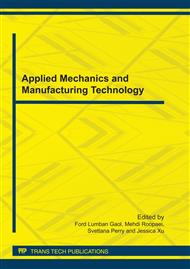p.136
p.140
p.146
p.151
p.155
p.159
p.164
p.170
p.178
Influence of Size of Abrasive Particles in Conveyor Liquid on Ultrasonic Cavitation Machining Process
Abstract:
In advanced technological industries, like aerospace, missile, nuclear reactors, and automobile industries; the necessity of producing precise parts is clearly unavoidable. Further, conventional machining processes often face difficulties in producing these parts due to the big size of removed materials. Hence, kinds of machining named Non-Traditional Machining processes are developed since World War II largely in response to new industrial requirements. By the NTMs, precise parts can be produced thanks to molecular or atomic chip removal. Cavitation machining (CM) was lately proposed as a new non-traditional machining method. In this process, the released energy from collapsed bubbles is used to remove material from the workpieces surface. This energy is applied to abrasive particles and threshes them to the workpiece surface. There are some parameters affecting material removal rate (MRR) in CM process. One of the main parameters is the size of abrasive particles in conveyor liquid. Since it is a new process in machining sphere, there are no studies in this regard. This paper presents experimental results about influence of size of abrasive particles in conveyor liquid on Ultrasonic Cavitation Machining (UCM) process. The experimental results will be discussed, and the best size of the particles in which the MRR is maximized will be presented.
Info:
Periodical:
Pages:
155-158
Citation:
Online since:
August 2011
Authors:
Price:
Сopyright:
© 2011 Trans Tech Publications Ltd. All Rights Reserved
Share:
Citation:


